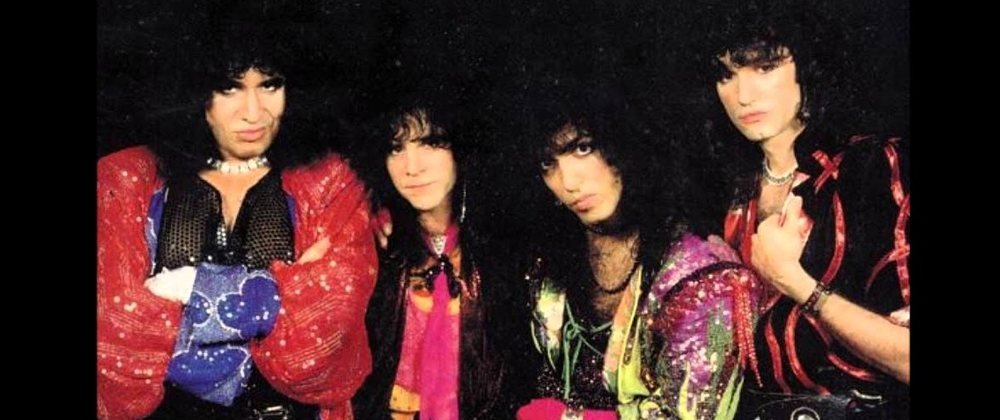TAKE IT OFF: KISS TRULY UNMASKED: Reevaluating The Post-Greasepaint Years
Kiss's non-makeup years started in 1983 and came to aclose in 1996 with the reunion of the original four-member group. It's a shortperiod in the context of their overall history but it was the do-or-die time for the group, an era where they worked hard toshake off the cartoon/kiddie vibe that had overtaken their public image at theend of the '70s. The music they produced during this time was variable inquality for a number of reasons - constantly shifting lineups, Gene Simmonsbeing distracted by other areas of showbiz and a tendency to follow trendsrather than lead - but there's also a decent amount of it that deserves a reevaluationby hard rock fans.
If you're interested in exploring all the ups and downsof this intriguing era, rock book specialist Greg Prato has produced aworthwhile guidebook in Take It Off:Kiss Truly Unmasked. Each album from LickIt Up through Carnival Of Soulsgets a chapter. It's worth noting that the final makeup-era outing, Creatures Of The Night, getsgrandfathered into the rundown because it was reissued with a non-makeup coverand a couple of remixes during this era (this works because this album alsorepresents the unofficial beginning of the commercially up-to-date"non-makeup" Kiss sound).

Prato kicks off each chapter with a critical essay onthe album being covered that mixes his thoughts on the strengths and weaknessesof the album, mixed with well-researched historical facts to provide contextfor the band's motivations behind the album in question. He strikes the rightbalance between the fondness for the group and a search for meaning you'dexpect from a fan with the clear-eyed assessment of the work's foibles you'dexpect from a critic. For example, he'llmake a case for the back-to-basics appeal of Hot In The Shade but isn't afraid to admit it has too many songsand too much experimentation while pointing out which songs fall short.
The author also adds in some worthy sidebars: funexamples include a look at the movies that Simmons starred in during hisside-career as a film actor during these years (wait 'til you read about Never Too Young To Die), a rundown ofthe solo albums produced by former Kiss members in the '80s and '90s andexplorations of the group's music videos and VHS releases during the non-makeupyears. Perhaps the coolest of these sidebars is a surprisingly involved anddescriptive rundown of on-camera interviews that the group did during this era,complete with commentary on the nature of the Simmons/Stanley relationship andhow it varied from interview to interview.
In a savvy move, Prato enhances the complexity of thebook's viewpoints and critical commentary by bringing in a variety of voices tosupplement his work. For example, you get to read Richard Christy from the HowardStern Show testify to his childhood love for Animalize and Brent Fitz make his case for Hot In The Shade. There's also a nice collection of thoughts fromdifferent people, connected to the band and outside it, that pay tribute to thegone-too-soon Kiss drummer Eric Carr. Of particular interest is a recurringfeature with Curt Gooch, who is known to Kiss fans for writing an excellenthistory of the band's concerts called KissAlive Forever. He provides excellent detail on how the tours went, what thesetlists and stage design were like and how the fortunes of the tour reflectedthe fortunes of the band at that time.

Even better, there are interviews or self-pennedfeatures by people who have worked with the band. A notable example is BruceKulick, Kiss's lead guitarist between 1984 and 1996, who chimes in with histhoughts on Alive III and a guide tothe guitars he used during the non-makeup era. You also get a chat with RonNevison, producer of the uber-controversial Crazy Nights album, who offers a frank assessment of thesongwriting situation in the band during that time. There's more where thatcame from: Charlie Benante of Anthrax talks about being produced by Simmons andPaul Stanley for the Kiss My Asstribute album, Richie Ranno of Starz gives fascinating insight into how theKiss conventions began, etc.
In short, Take It Off: Kiss Truly Unmasked is a must-read for the Kiss fanbase because it provides a fresh look at an underexplored run of albums in the band's history as well as tons of new background info and commentary that will enhance fans' understanding of the factors that influenced those albums. If you grew up with the non-makeup Kiss on the radio and MTV, you'll find this book a rewarding read.


